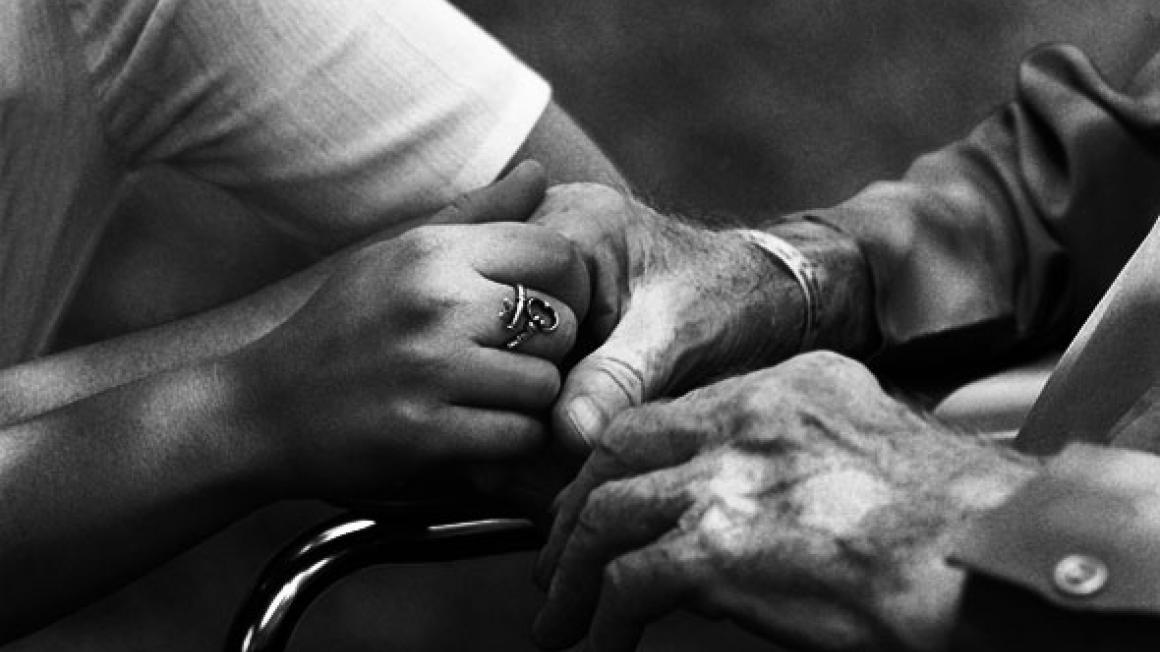A BURNING ISSUE
Good news, of course. But with increased life expectancy comes attendant problems, with more people predicted to suffer from dementia, depression and cancer over the coming years.
Interwoven with that are other issues. The breakdown of the extended family means that only one per cent of households contain three generations (according to the Office of National Statistics), so elderly people are less likely to live with and be cared for by their children. Single women were once expected to give up their jobs to care for their parents. Setting aside the obvious social problems this caused, most people can’t now afford to do so before retirement age. Government statistics predict that places in residential care and nursing homes will have to increase from around 450,000 currently to approximately 1,130,000 by 2051.
Put all this together and you have a difficult and complex situation within an already stretched health service, and new challenges for residential care and nursing homes. So it is important to scrutinise statistics, which are often delivered with cavalier insouciance. Take, for instance a recent newspaper report, which stated that last year there were more than 103,000 deaths in residential care homes compared with 38,000 deaths 10 years ago. This sounds an alarming increase, but these statistics are misleading. People who might once have ended their days in hospital, for example, are now moved into nursing homes. According to Stephen Lowe, social care policy advisor at AgeUK, the level of need in residential homes has increased in the last 10 years. ‘Local authorities have concentrated over the period on providing care for acute need at home, so people are going into residential homes much later,’ he says. ‘Therefore, what you find in these homes are people with dementia or requiring end-of-life care.’
Lowe’s comments are backed up by the Alzheimer’s Society, which estimates that approximately 75 per cent of people in long-term care have some form of dementia. Confirmation also comes from Dominique Kent, director of operations for domiciliary care provider Good Care Group. ‘When we started three years ago,’ she tells me, ‘we expected that our main provision would be companionship. But now the acuity level is much greater, with a large percentage of our clients experiencing some kind of memory loss.’
The recent economic meltdown has also had its effect on when people choose to move into retirement accommodation. The turmoil in the finance sector, the stalling of the housing market and financial insecurity together have meant that older people have become much more cautious about selling up. They are now tending to sit tight and will only move into residential care after a crisis. Guy Geller is head of Sunrise Senior Living UK, which operates 27 communities in the UK offering assisted living, nursing and dementia care. ‘In 2008, when the housing market stopped flowing,’ he says, ‘we noticed that the average age went up by about a year and a half over four months. We realised that people were moving reactively rather than proactively, so when they came to us their problems were already more acute.’
Why the horror stories?
Despite the growing professionalism of the retirement sector, several recent events have created anxiety for potential users of care. Take, for instance, the collapse, in 2011, of Southern Cross, one of the UK’s biggest care-home chains, and much publicised cases of severe abuse. The Cavendish Review, published in July 2013, highlighted shortcomings in the training of healthcare assistants (HCAs), though the government has now promised to establish minimum training standards by spring 2014.
Meanwhile, the Care Quality Commission (CQC), its care-home assessments once a treasured source of information, has also had high-profile problems, with the alleged cover-up of the Furness report. Three years ago, it withdrew its star rating, which provided a useful, simple way to evaluate a home, in favour of a less exact system of pass or fail. This effectively meant that a home found at fault on one small technical point could fall into the same fail category as a home performing seriously below standard across the board. Representatives of three leading care providers have all told me that they would welcome a return to some kind of ratings system. ‘I’m disappointed in the direction of the CQC,’ says Geller of Sunrise. ‘The present system is too black and white and suggests a lack of commitment – and that the commission wants to regulate without telling homes what to do.’
Jane Ashcroft, chief executive of Anchor, says her organisation, along with four care providers, will be taking part in an Ipsos MORI survey across 1,000 care homes in October, asking residents for their views and subsequently displaying ratings out of a hundred. ‘It is not just for regulators to provide information,’ she says. ‘It is our job as providers, as well.’
It is also encouraging to learn that the CQC is taking these reproaches to heart and aiming to do better. ‘There has been justified criticism and we need to accept that the binary pass/fail system doesn’t work,’ says Alan Rosenbach, special policy advisor for the CQC. A new chief inspector of adult care services, Andrea Sutcliffe, has been appointed. Her job will be to consult with users, providers, local authorities, relatives and other relevant parties to devise an aggregated assessment along the lines of an Ofsted report. ‘We want as wide a spread of input as possible,’ adds Rosenbach. ‘We intend to roll out the new reporting system in 2014.’
Although at times the retirement sector must feel it has done 10 rounds with a prizefighter, on the whole it welcomes lively debate and the widespread interest in its provisions. Active scrutiny will only help to improve the quality of elderly care, and the best providers – offering gleaming examples of both domiciliary and residential care – have nothing to fear from judicious assessment.


